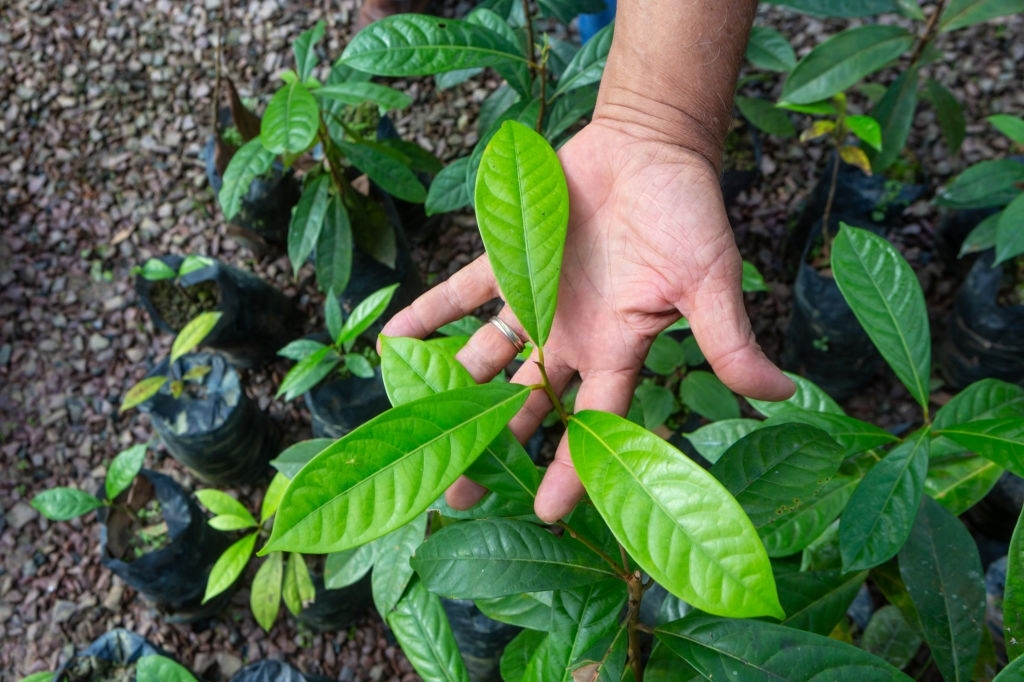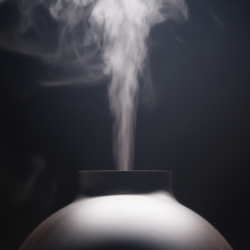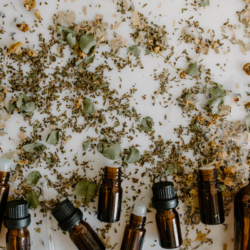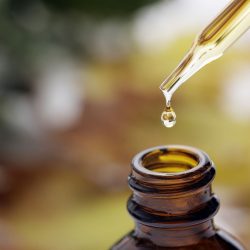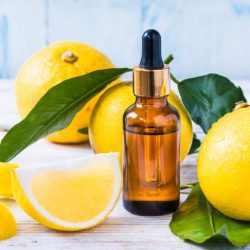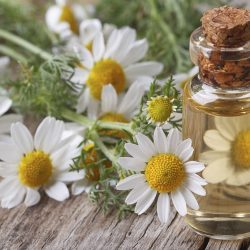Discovered by botanists in 1925 in the Juriti Velho region (States of Para), this tree was named “rosewood” because of the delicately scent of its wood . The study of this tree revealed that it contained an essential oil of an exceptional richness in linalool , an odorous substance precursor of the perfume of lavender. A thriving extractive industry developed in the Amazon basin to supply the perfume industry in the Grasse region. Its wood is also sought after for its hardness and its utility in cabinetmaking and for making musical instruments, as well as by the Indians in traditional Amazonian medicine.
A little history
The female rosewood (Aniba parviflora) and the male (Aniba rosaeodora) were discovered and then exploited in Guyana in the 1920s. In Brazil, it is Aniba rosaeodora var. amazonica which was used for obtaining essential oil. Fifteen tonnes of essential oils were produced in 1926. Its overexploitation in the 1960s (50,000 tonnes per year) notably threatened the species with extinction and hastened its cultivation. The wood and essential oil of A. rosaeodora are now protected by their inclusion in Appendix II of the CITES (Convention on International Trade in Endangered Species of Wild Fauna and Flora) lists in order to reduce their exploitation.
The essential oil of rosewood is widely used in perfumery, it is used in the composition of prestigious perfumes such as Paco Rabanne, Givenchy or Chanel. The tree was discovered in the Amazon rainforest, where the Indians have always used it in their traditional pharmacopoeia. Having become synonymous in the West with refinement and luxury , it has inspired novelists, from Balzac to Sharyn McCrumb (Un cercueil en bois de rose, 1999).
It is to the Brazilian botanist and ethnologist Walter Adolfo Ducke (1876-1959) that rosewood ultimately owes its Latin name Aniba rosaeodora which earned it the place of baptism in 1930. In the previous decade, it was therefore perfumery and cosmetics which call upon the essence of rosewood, a major supplier of this essential linalool to the perfumer. Also we cut perfume rosewood in order to extract the essential oil.
What are the pharmacological properties of rosewood essential oil?
Antispasmodic property:
The linalool opposes the release of acetylcholine and reduces muscle contractions . It interferes with the calcium channels at the level of the neuromuscular junction and reduces the contraction of the striated muscles, thus inducing a local anesthetic action .
Analgesic and anti-inflammatory property:
The linalool binds to muscarinic receptors, opioids and dopaminergic and therefore exerts an analgesic action of opioid-like. Linalool has also been shown to act on N-Methyl-d-aspartate (NMDA) receptors, as well as glutamate receptors. In addition, it reduces edema caused by carrageenan, thereby demonstrating anti-inflammatory action .
Antimicrobial and antiparasitic property:
The studies demonstrate an antibacterial action in vitro against C ampyloacter jejuni, Escherichia coli, Listeria monocytogenes and Staphylococcus aureus but is however inactive on Pseudomonas aeruginosa . It is however active on Giardia lamblia, Leishmania amazonensis as well as on lice.
Slight anti-infectious , rosewood oil is also antifungal (against fungi or parasitic yeasts in humans or animals – infections called mycoses ) – active against strains of Candida resistant to fluconazole and antiviral on diseases tropical; the linalool shows a strong activity against Adenovirus-2 (DSA-II), responsible for pharyngitis, pneumonia and gastroenteritis. The anti-infectious activity is in fact enhanced by a synergy between linalool, 1,8-cineole and terpene hydrocarbons.
Skin property:
Essential in the care of dull, tired , fragile or irritated skin, rosewood oil is the must for “anti-wrinkle” perfect for the body, because it firms the tissues and restores elasticity while being a skin regenerator. .
Local analgesic and healing , this essential oil is also distinguished for its cell regenerating power .
Property on the central nervous system:
The linalool exercised indeed a complex action; stimulating, it thus promotes learning and memorization by acting on nicotinic receptors. Sedative, it also reduces motor activity and potentiates sleep . Anticonvulsant , it decreases the release of glutamate; a stimulating brain mediator. In fact, it acts on the glutamate receptor, NMDA, by reducing nerve transmission, thus inducing an antiepileptic effect .
By inhibiting glutamate binding in the cerebral cortex, linalool thus interferes with glutamatergic transmission, suppresses excitatory glutamate receptor function, and causes dose-dependent non-competitive inhibition of NMDA antagonist binding.
Other properties:
- Lymphatic drainage (with Cymbopogon martinii)
- Immune stimulant
- Aphrodisiac, sexual tonic
- Antistress, emotional regulator
- Hypotensive, bradycardic
- Sedative, calming, hypnotic
- Anxiolytic
- Antioxidant (inhibits lipid peroxidation), hypothermic
- Anti tumor, stimulates various cytokines; IFN-γ, IL-13, IL-2, IL-21, IL-21R, IL-4, IL-6sR, TNF-α, induces the Th1-type immune response, inducing apoptosis
- Attractive to pollinators
Does rosewood essential oil require any precautions for use?
- Beware of possible gynecomastic effects in prolonged use. The linalool shows anti-androgen activity and low estrogenic activity by binding to estrogen receptors. The linalool prevents the production of testosterone. This essential oil is therefore to be avoided in the long term in males as an endocrine disruptor
- The essential oil is potentially allergenic
Medical bibliographic sources and clinical trials :
- Simić A, Soković MD, Ristić M, Grujić-Jovanović S, Vukojević J, Marin PD. The chemical composition of some Lauraceae essential oils and their antifungal activities. Phytother Res. 2004
- Boiteau, P; 1986. Traditional medicine and pharmacopoeia
- Ramakamahery, R; 1986. Fight against pathogenic bacteria for humans
- Laure Emperaire. The Forest at Play: Extractivism in Central Amazonia. IRD Editions, 1996
- Belaiche P., History and prescription in aromatherapy, EMN, C-1, 1991
- Fleurentin J., Good use of aromatherapy. Essential oils that heal, 2018

